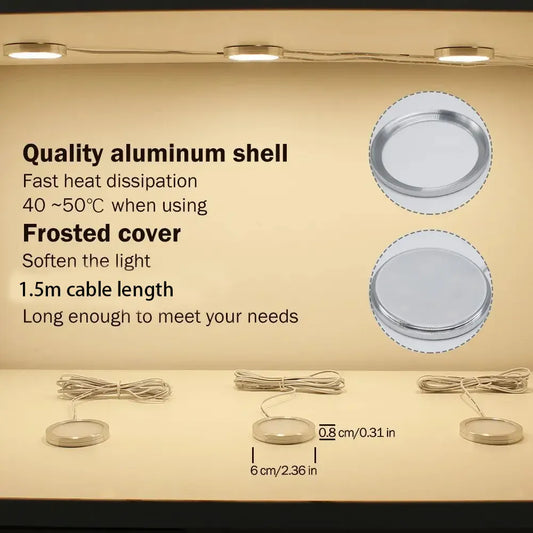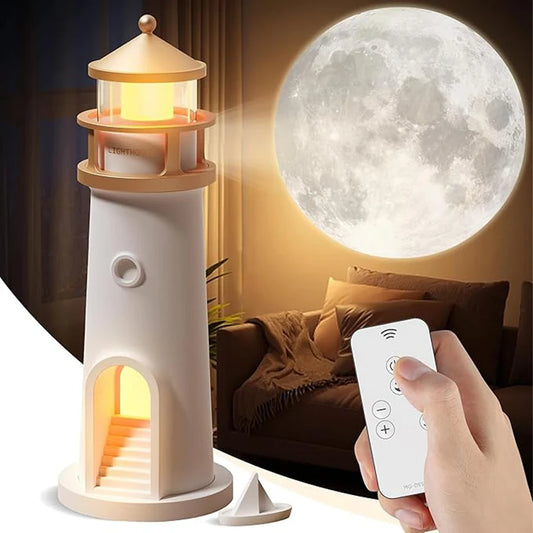
Do You Need an Electrician to Install Under Cabinet Lighting?
Share
When considering the installation of under cabinet lighting, the question often arises: Do you need an electrician to install under cabinet lighting? The answer depends on the type of lighting, your comfort level with electrical work, and the complexity of the installation. While some under cabinet lighting solutions can be installed as a DIY project, more complex setups may indeed require the expertise of an electrician. Let’s delve into the details, backed by professional advice and practical examples.
Understanding the Types of Under Cabinet Lighting
Plug-in Lights: These are the simplest to install and do not require any electrical work. They typically come with adhesive backing or mounting screws and can be plugged into a standard outlet. Examples include LED strip lights or puck lights that plug into wall outlets.
Hardwired Lights: These lights are connected directly to your home’s electrical system and often require more complex installation, which can involve cutting drywall, running wires through walls, and connecting to a switch. This setup usually requires an electrician to ensure safety and compliance with electrical codes.
Battery-Operated Lights: These are another easy-to-install option, requiring no wiring at all. They are ideal for renters or temporary setups but need regular battery replacements.
When to Call an Electrician
Complex Installations: For hardwired lights, it’s generally best to hire an electrician. The National Electrical Code (NEC) provides guidelines for safe electrical installations, and a licensed electrician will ensure that your installation meets these standards, reducing the risk of electrical hazards.
Lack of Electrical Experience: If you’re not comfortable working with electricity or don’t have experience with home electrical projects, hiring an electrician is the safest choice. Incorrect wiring can lead to shorts, fires, or other dangerous situations.
Permits and Inspections: Some local building codes require permits and inspections for electrical work. An electrician can handle these requirements and ensure that your installation is up to code.
Expert Opinions and Data
- National Electrical Code (NEC): The NEC sets standards for electrical safety in residential and commercial buildings. Compliance with these standards is crucial for preventing electrical fires and ensuring safe installations.
- Illuminating Engineering Society (IES): The IES recommends professional installation for complex lighting systems to ensure proper functionality and safety.
DIY Installation: Pros and Cons
Pros:
- Cost Savings: DIY installation can save money on labor costs.
- Flexibility: You can install the lights at your own pace and customize the setup to your liking.
Cons:
- Safety Risks: Without proper knowledge, you risk electrical hazards.
- Complexity: Some installations can be challenging without the right tools and experience.
- Code Compliance: Ensuring that the installation meets local electrical codes can be difficult without professional help.
Detailed Installation Examples
Example 1: Installing Plug-In LED Strip Lights If you choose plug-in LED strip lights, the installation process is straightforward. Measure the length of the cabinet, cut the LED strip to size, peel off the adhesive backing, and stick the strip under the cabinet. Plug it into the nearest outlet, and you’re done. This type of installation is perfect for those who want a quick and easy solution.
Example 2: Hardwiring Under Cabinet Lights For hardwiring, start by planning the layout and determining where to run the wires. Turn off the power at the circuit breaker, then drill holes in the cabinets for the wires. Run the wires through the holes and connect them to the light fixtures. Finally, connect the wires to the power source, typically a wall switch, and secure all connections with wire nuts. This process can be complex and is best handled by an electrician to ensure safety and compliance with electrical codes.
Example 3: Battery-Operated Puck Lights These lights can be installed in minutes. Simply use the provided mounting screws or adhesive pads to attach the puck lights under the cabinets. Insert the batteries, and you have instant lighting. This option is ideal for renters or those looking for a temporary solution.
Personal Experience and Tips
From my experience, installing plug-in lights was a breeze. It took about 30 minutes to measure, cut, and mount the lights under my cabinets. The hardest part was hiding the wires, but adhesive cable clips did the trick. On the other hand, when I decided to hardwire lights in my parents’ kitchen, we hired an electrician. It took a few hours, but the result was seamless and professional. The electrician even suggested adding a dimmer switch, which has been fantastic for adjusting the lighting based on the time of day.
Conclusion
In conclusion, whether you need an electrician to install under cabinet lighting depends on the type of lighting and your comfort with electrical work. For simple plug-in or battery-operated lights, a DIY approach is feasible and cost-effective. However, for hardwired installations, hiring an electrician is recommended to ensure safety and compliance with electrical codes. By considering your specific needs and the complexity of the project, you can make an informed decision that ensures your kitchen is well-lit and safe.
Explore our range of energy-efficient under cabinet lighting solutions at Lumaz to find the perfect fit for your kitchen.
FAQs
Can I install hardwired under cabinet lights myself if I have some electrical experience?
If you have experience and are familiar with electrical work, you might be able to install hardwired lights yourself. However, it’s crucial to follow the NEC guidelines and local building codes. If in doubt, consult a licensed electrician to ensure safety and compliance.
What are the risks of DIY electrical work for under cabinet lighting?
DIY electrical work can be risky if not done correctly. Potential hazards include electrical shocks, fires, and short circuits. Incorrectly installed lighting can also fail to function properly, leading to additional costs for repairs or replacements.
Are there specific tools I need for DIY under cabinet lighting installation?
Yes, for hardwired installations, you’ll need tools such as a drill, wire strippers, a voltage tester, screwdrivers, and possibly a drywall saw. For plug-in or battery-operated lights, the requirements are minimal, often just needing basic hand tools for mounting.
How do I ensure my under cabinet lighting is energy efficient?
Choose LED lights, which are highly energy-efficient and have a long lifespan. Look for lights with the ENERGY STAR label, which meet strict energy efficiency guidelines. Additionally, consider installing dimmer switches to adjust the brightness and save energy when full illumination isn’t necessary.
What should I do if my under cabinet lights stop working?
First, check the power source and ensure the circuit breaker hasn’t tripped. For plug-in lights, check the outlet and the plug connection. For hardwired lights, ensure all connections are secure and there are no loose wires. If the issue persists, it may be best to consult an electrician to diagnose and fix the problem safely.
How can I hide the wires for a cleaner look?
For a clean and professional look, use adhesive cable clips or raceways to secure and conceal the wires along the underside of the cabinets. You can also run wires through the cabinets if possible, but this may require drilling and more complex installation steps.
For More Information
1. Under Cabinet Lighting Buying Guide
2. How to Choose the Best Under Cabinet Lighting for Your Kitchen
3. How To Install Under Cabinet Lighting - Step-by-Step Guides




























 />
/>
 />
/>
 />
/>
 />
/>
 />
/>